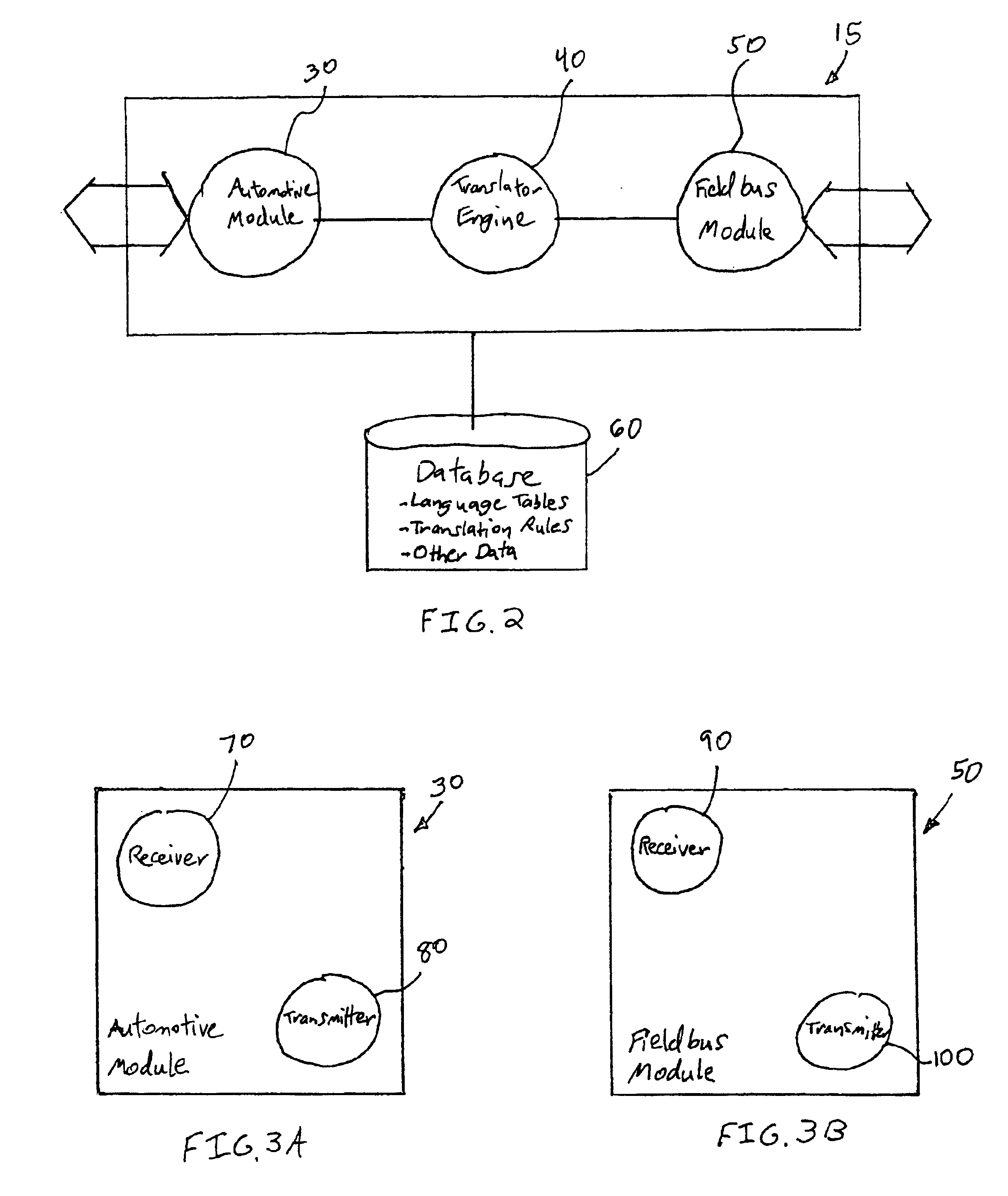Self-contained, on-board, CAN-to-fieldbus converter and method of using the same
a converter and can-to-fieldbus technology, applied in the field of self-contained, on-board, can-to-fieldbus converters and methods of using the same, can solve the problem of not communicating with the preexisting vehicle computer network
- Summary
- Abstract
- Description
- Claims
- Application Information
AI Technical Summary
Benefits of technology
Problems solved by technology
Method used
Image
Examples
Embodiment Construction
With reference to FIG. 1, an embodiment of a self-contained, on-board, CAN-to-fieldbus converter (“converter”) 10 for communicating non-automotive, industrial automation devices or components (“industrial devices”) 11 on a fieldbus network 12 (any of a number of industrial network protocols available) and automotive computers or devices (“automotive devices”) 13 on a control area network (“CAN”) 14 is shown. The converter 10 includes a CAN-capable microprocessor 15, a vehicle network transceiver 16, and a combination industrial network transceiver 18 and protocol handler 19. The transceiver 16 may be connected to the microprocessor 15 via a serial bus 17 and the protocol handler 19 may be connected to the microprocessor 15 via a parallel bus 20. Each of these components will be described in turn below.
Industrial Devices
In regard to the industrial devices 11, exemplary industrial devices 11 include, but not by way of limitation, an entire electrically powered air conditioning system ...
PUM
 Login to View More
Login to View More Abstract
Description
Claims
Application Information
 Login to View More
Login to View More - R&D
- Intellectual Property
- Life Sciences
- Materials
- Tech Scout
- Unparalleled Data Quality
- Higher Quality Content
- 60% Fewer Hallucinations
Browse by: Latest US Patents, China's latest patents, Technical Efficacy Thesaurus, Application Domain, Technology Topic, Popular Technical Reports.
© 2025 PatSnap. All rights reserved.Legal|Privacy policy|Modern Slavery Act Transparency Statement|Sitemap|About US| Contact US: help@patsnap.com



